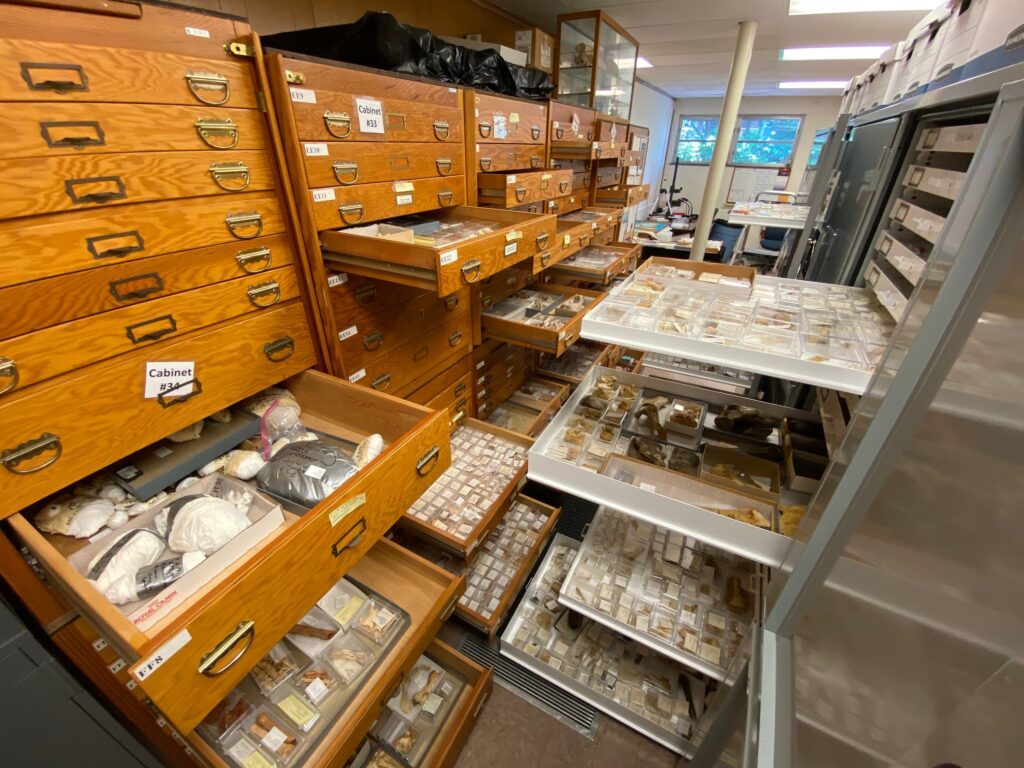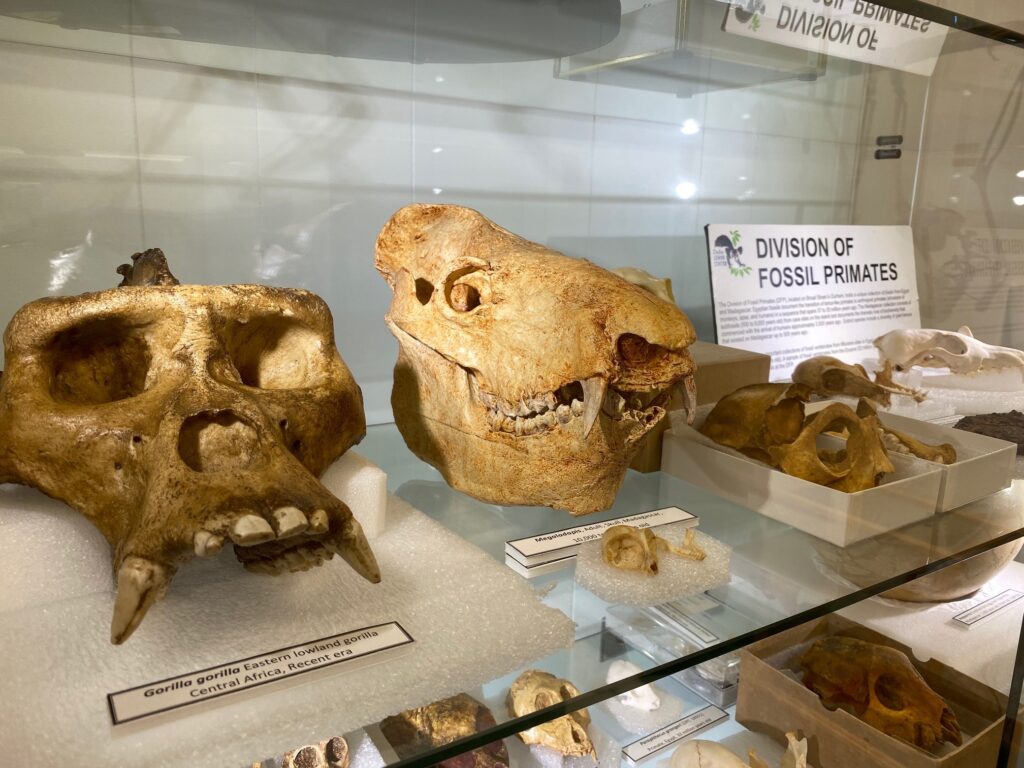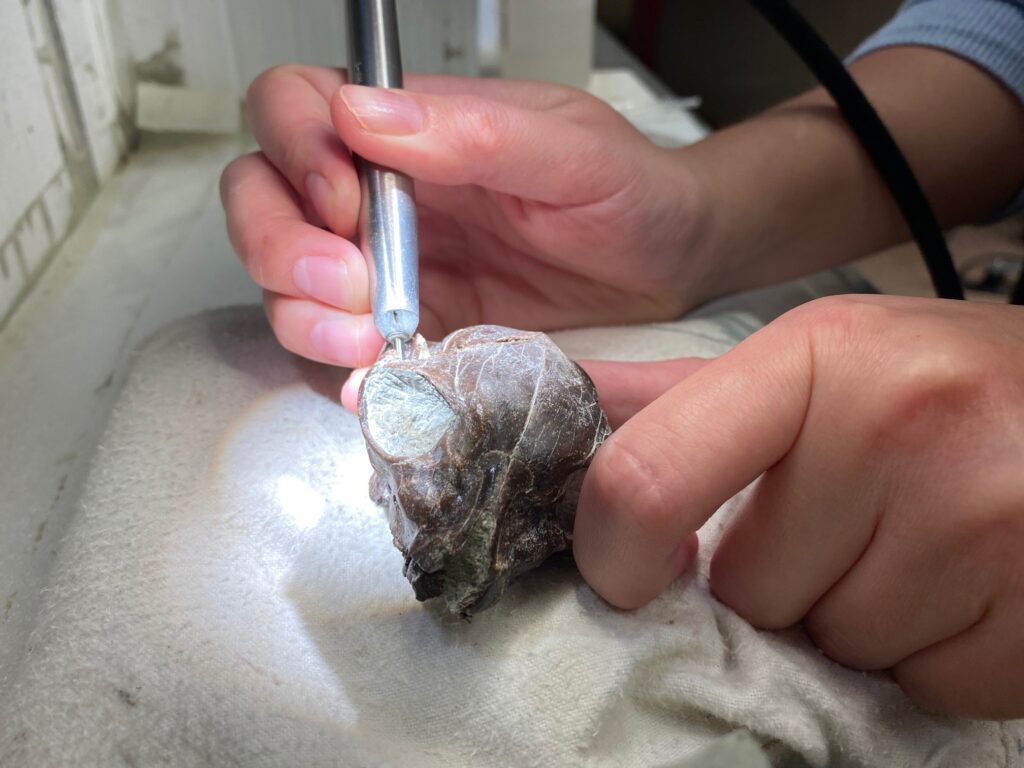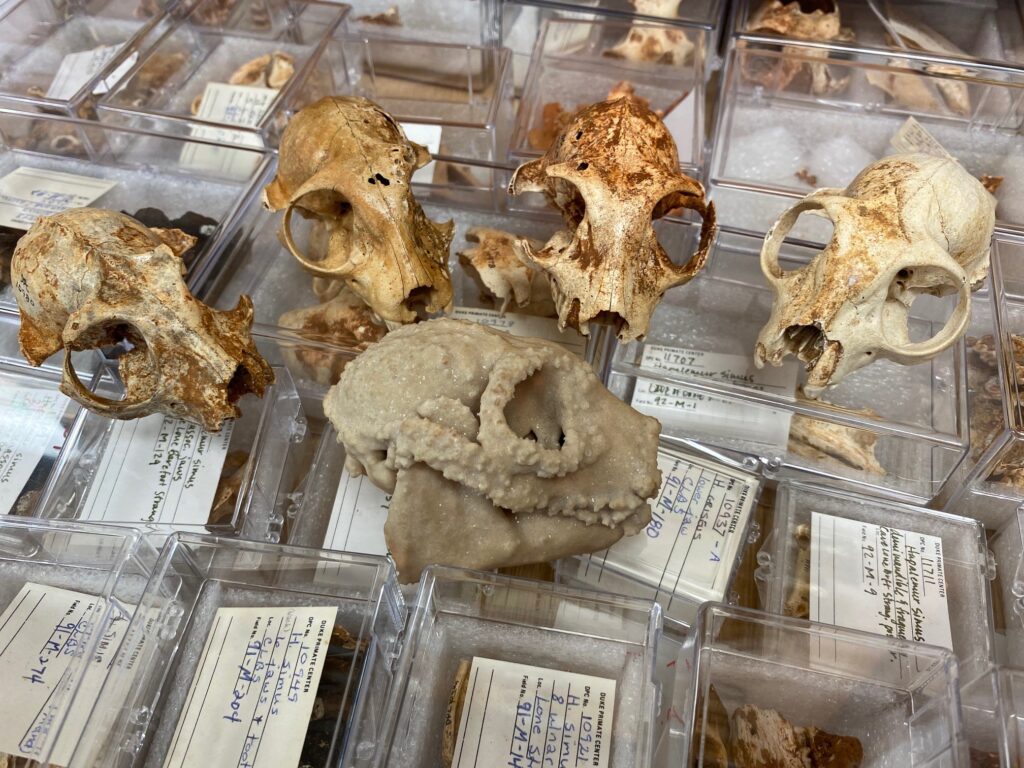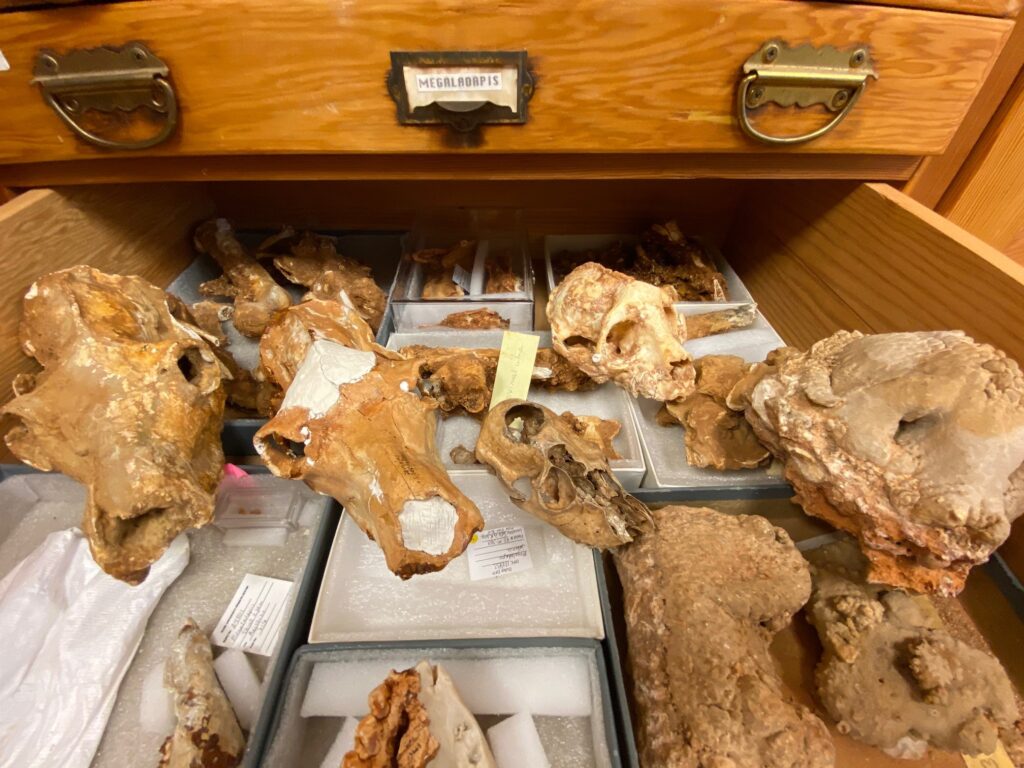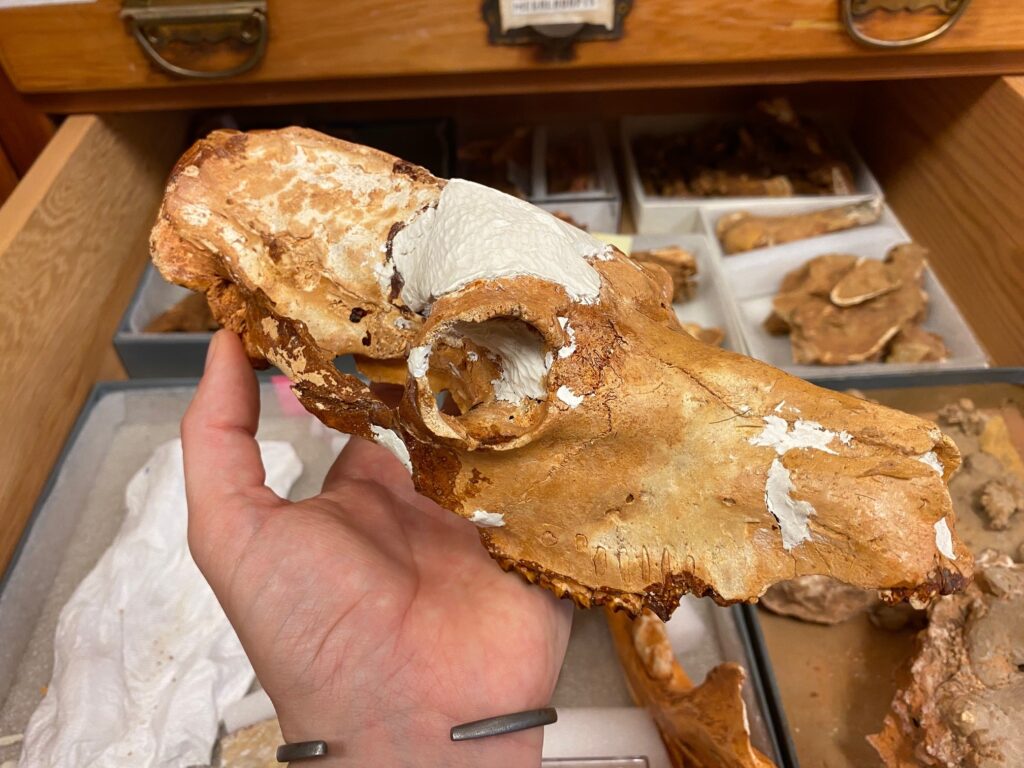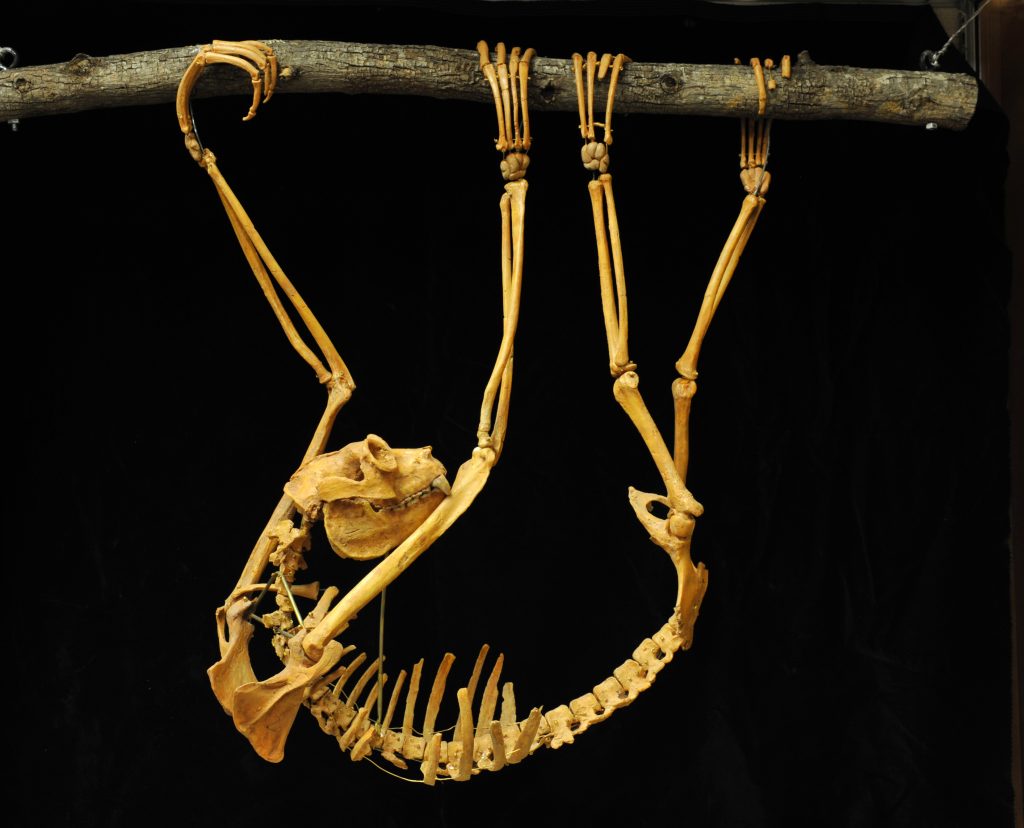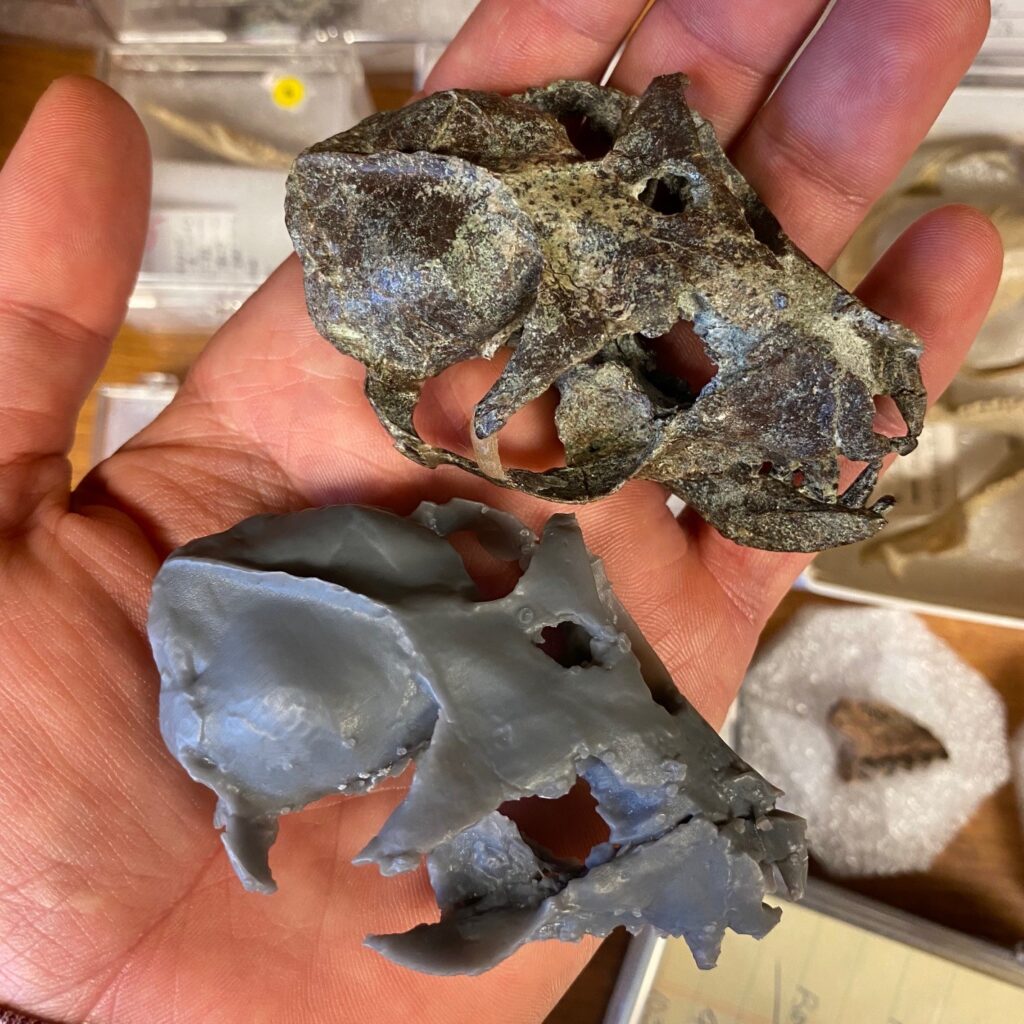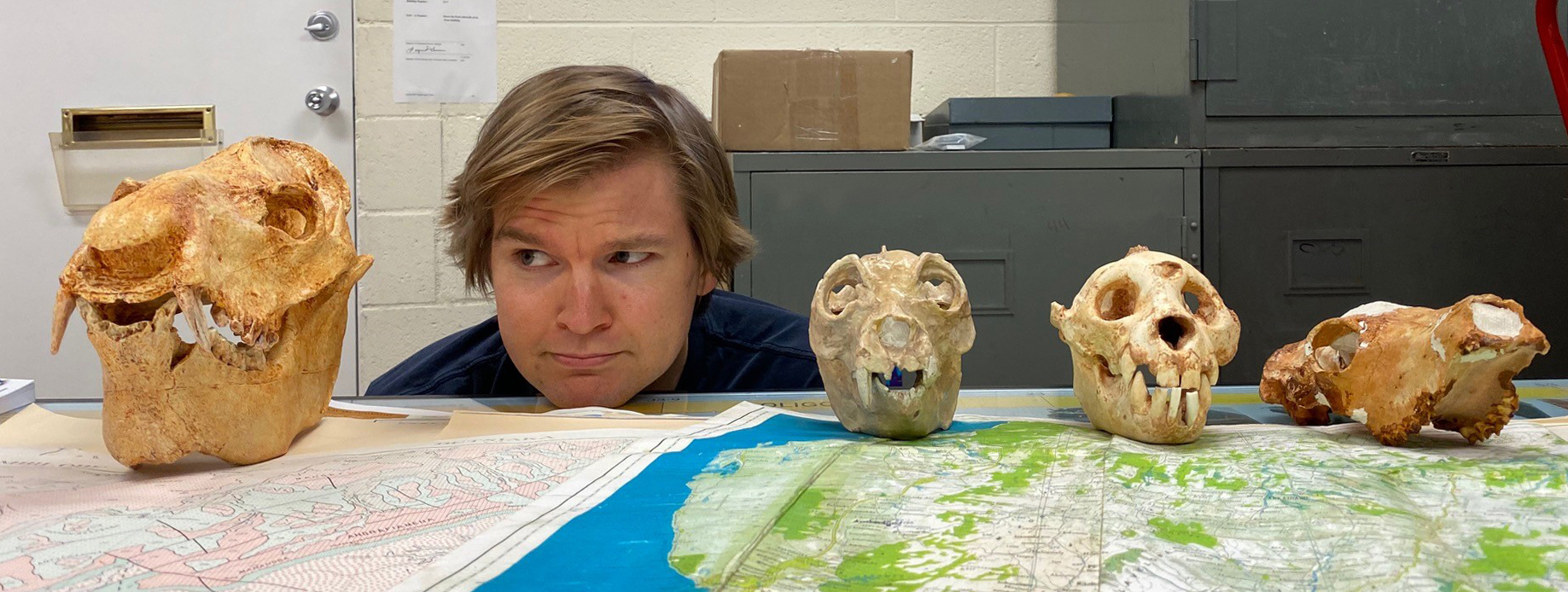Division of Fossil Primates: 2020 Impact Report
For decades, the Duke Lemur Center’s fossil collections have provided a research resource to the world, yet only a few non-paleontologists have heard of the collection or the countless ways its more than 35,000 specimens can provide insights for scientific studies. With the goal of increasing awareness of the collection for a variety of potential new users—students, educators, scientists, and curious lifelong learners—we will be changing the name to the DLC Museum of Natural History. In preparation for this, our fossil team worked with the DLC Education and Outreach team to design an exhibit that tells the epic story of primates, from their origin after the extinction of the dinosaurs to today, when most primate species are on the verge of extinction. The exhibit will also be a tool for virtual classroom tours and programming. We are excited to share the collection with a wider audience through this new DLC exhibit.
The year 2020 also brought new discoveries to the fossil collection. For example, researcher Erik Seiffert from the University of Southern California and his team used a 30-million-year-old monkey stored in the collection to help describe a close relative that was discovered in South America; and Adam Smith, a bird expert from Clemson University, and his team discovered the oldest African owl lurking in the specimen drawers at the DLC. These are just two of a couple dozen studies that used the DLC’s fossil collection in 2020.
Even during lockdown, researchers continued to explore the fossil collections by accessing the online specimen collection at morphosource.org, a website created by Duke Evolutionary Anthropology Professor, Dr. Doug Boyer. We have fielded hundreds of specimen download requests from students, researchers, and educators and the online collection was visited tens of thousands of times.
The DLC fossil collection also received two federal grants totaling over $800,000 to help support our efforts to preserve and share the collection. A grant from the Institute for Museum and Library Services supports the digitization of our catalogue and archive. By the end of the three-year grant, specimens from the natural history collection will be accessible, alongside archival materials from the living collection, allowing researchers to study the entire lifetime of a lemur at the DLC. We rely upon our active group of incredible volunteers to help build this unique scientific resource. A grant from the National Science Foundation supports intensive work on our most vulnerable collections, including the collection with oldest known aye-aye relative. By the end of the grant period, hundreds of specimens will be extracted from salty, volatile rock, scanned, and uploaded to MorphoSource. The project also helps us create an online catalogue where outside researchers can see what we have in the DLC collection and we can track specimens and archival materials in the building and on loan. The grant will allow us to purchase new specimen cabinets as we add fossils to the story of primates.
In the coming year, we are hoping to get back out into the field to search for new specimens, and provide training and research opportunities for Duke students and DLC interns. We still have so much to learn about the ancestors of lemurs and humans. As we preserve, share, and expand the DLC fossil collection, we ensure it remains a hub for primate discovery and education.
Notable achievements in the past year were:
Prepared new specimens of primates and other mammals from North America, Egypt, Madagascar, and South America for new research projects
Expanded the publicly accessible 3D scan collection on the Duke-created website MorphoSource to 1,600 specimens
Received over $800,000 in federal grants to support efforts to digitize the collection and rescue vulnerable, crumbling fossils
Created a “fossil incubator,” a special room outfitted with a donor-sponsored environmental control unit, that keeps temperature and humidity stable for our most delicate specimens
Reached new audiences by hosting virtual tours and talks about the collection, in collaboration with the DLC education team for Earth Day, classroom tours, DLC virtual tours, and through the education program Exploring by the Seat of Your Pants
Developed a new exhibit space and tour experience so DLC visitors can travel into the ancient forests of Madagascar to meet giant, extinct lemurs, and into the deserts of North America, South America, and Egypt to meet some of the oldest primates and monkeys ever discovered
Digitized field notebooks and field maps from the 40-year-old natural history archive with the help of volunteers
Developed plans for future field expeditions to Wyoming, Utah, and Madagascar to expand the collection, collaborate with new researchers, and learn more about the origins and evolution of lemurs and other primates
Using the Primate Past to Protect Primates’ Future
The DLC natural history collection has been instrumental in telling the epic story of lemurs and humans, which crosses five continents and 66 million years.
The DLC is home to two spectacular collections: the living, thriving colony of lemurs that teach us about lemur biology, behavior, and conservation; and the natural history collection, which is housed in an unassuming building on Broad Street, near Duke’s East Campus. Inside the building is a trove of fossils and bones that include the largest and most diverse collection of primate fossils in the United States. For decades, researchers from around the world have traveled to the DLC natural history collection to learn about our ancient primate relatives and the ecosystems that shaped the evolutionary journey of lemurs and humans. This year, the DLC natural history team worked to expand access to the collection by developing physical and virtual exhibits. We also offered virtual tours and talks organized by the DLC education department. In the coming year, we plan to welcome visitors to the new fossil exhibit and offer a tour through the collections so everyone can learn how we use the primate past to understand the primate future.
Despite housing bones and extinct animals, the natural history collection is a lively place. The specimens themselves need constant monitoring because temperature and humidity threaten to break down specimens. A generous donation to the DFP let us install an environmental control unit to stabilize one section of the collection, ensuring our most delicate specimens survive for decades of future research. Even during lockdown, our staff and volunteers continued to catalogue, study, and update the collection for research and education.
The DLC’s Fossil Collection manager, Catherine Riddle, keeps track of specimens, and sends them out on loan to researchers who couldn’t visit the collections during the pandemic. The DLC Fossil Preparator, Karie Whitman, just wrapped up her first year on the DLC team. It’s her job to remove fossils from surrounding rock and to stabilize them for research. She also makes replicas of specimens, which helps reduce wear and tear on the collection. The DLC Digital Tomographer is Steven Heritage. He creates high-resolution 3D scans of the fossil collection and posts them on MorphoSource, a website that lets anyone access our digital fossil collection from anywhere in the world. So far, over 1600 specimens are accessible to students and researchers online with more being added each week. He also translates the scans into 3D prints for exhibits and outreach. The Curator of the fossil collection, Dr. Matt Borths, coordinates and collaborates with researchers, plans fossil expeditions, and searches for new ways to support the growing collection.

